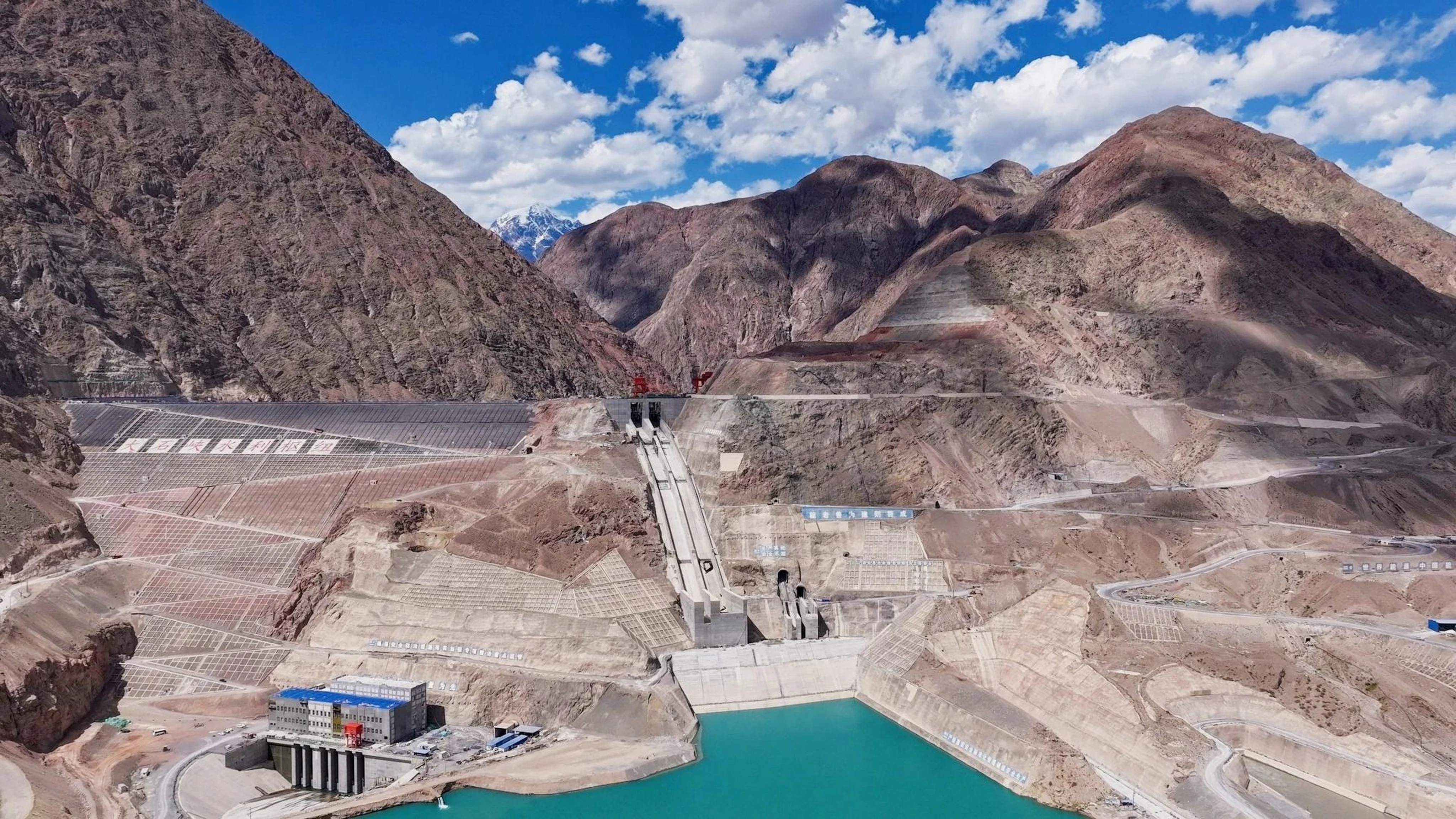By Victoria Bela
Copyright scmp

A record-breaking mega dam project in China’s far western Xinjiang region – built with the help of artificial intelligence and digital twin technologies – has begun storing water.
The Dashixia Water Control Project, located in the middle and lower reaches of the Kumarak River in Xinjiang’s Aksu prefecture, started to store water on Saturday.
Designed by the state-owned China Energy Engineering Corporation, it is the world’s tallest concrete-faced rockfill dam at a height of 247 metres (810 feet) – about the same as an 80-storey building, according to state media.
This type of dam consists of a large body of compacted rock or gravel material made watertight with a concrete slab on its upstream face. It has become the preferred dam design in the past few decades because it is considered safer, lower cost and suitable for taller structures.
The Dashixia project is also the world’s first dam of its kind to be completed using full-scale intelligent technology and construction, including the operation of unmanned equipment.
“The project utilised digital twin, AI and blockchain technologies to enable intelligent, 3D-printing-like construction to overcome seismic and geological challenges,” state broadcaster CGTN said in a report on Sunday.
When it is completed next year, the dam will have a reservoir capacity of 1.17 billion cubic metres, which will provide water to over 533,000 hectares of farmland in the Aksu River Basin and Tarim River Basin.
The dam is also expected to help with flood control measures and to reduce the occurrence of serious flood events.
With a total installed capacity of 750,000 kilowatts, it will also generate around 1.9 billion kilowatt-hours of electricity annually.
That is enough to power nearly 180,000 US households for a year, based on a per-household annual estimate of nearly 10,800 kilowatt-hours by the US Energy and Information Administration.
A range of intelligent technologies were used to design and build the dam, which allowed for it to be capped in December, eight months ahead of schedule, state-run China Daily reported on Sunday.
That included using geographic information systems to analyse the location, cloud computing, AI and building information modelling (BIM) – or the use of intelligent 3D models to generate a digital version of the project to help facilitate its construction and operation.
BIM is a digital process that can be used from design all the way to demolition by providing a central source of information for a project.
Wang Fengbin, deputy chief engineer of the China Gezhouba Group, a construction and engineering firm involved in the dam, told CGTN that BIM was used to create a large data pool for the project.
“Additionally, through the establishment of a cloud platform management system, we are committed to intelligent management and control throughout the entire process, along with an automatic meteorological, water condition and air quality monitoring system, and a seismic network,” Wang said.
The use of AI technology also helped to resolve technological hurdles in building the dam, including through on-site testing of moisture content and compaction quality.
Concrete-faced rockfill dams are becoming a popular design instead of the conventional earth-core rockfill dams. The latter are made watertight with a compact earth core rather than a surface layer of concrete.
In a simulation testing two of China’s highest dams – one concrete-faced and one earth-core – the seismic performance of the concrete-faced dam was better, according to a paper in the peer-reviewed journal Soil Dynamics and Earthquake Engineering in 2014.
That suggests concrete-faced dams could be better suited to withstand earthquakes, according to the researchers who carried out the study, from China Agricultural University and the state key laboratory of river basin water cycle regulation in Beijing.
Conservation measures have been taken near the dam project, including releasing 140,000 fish to help protect the biodiversity of the Tarim River Basin, according to the CGTN report.



